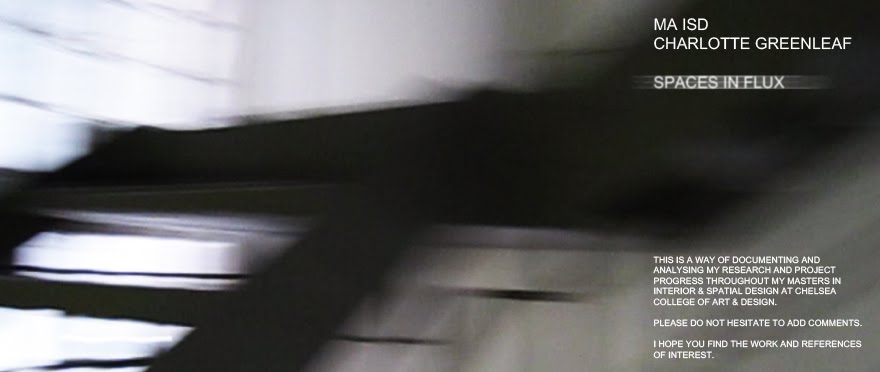Following tutorial discussions and also the fact that I am not entirely satisfied that this device is achieving the fullest from my project intentions, site and potential, it's time to reflect upon the body of research and information I have amalgamated.
I have reached a point in my project over the last month where I have become so concerned with the mechanisms of how to achieve specific movements, that my project is in fear of dismissing a social or political programme. It has been mentioned that perhaps the mechanisms do not necessarily need to be particularly concerned with such agendas, however this could add strength and much needed direction to my project at this stage of the year.
There is the notion of the films allowing the viewer to experience a space in a way that we would otherwise not be able to, where the motion path is derived from the architecture of the space. Maybe it concerns a fantasy of flying, achieving an experience out of the ordinary, exaggerating the qualities of the space.
The idea of finally using the filming mechanism to film inside a lighthouse has been an ongoing intention throughout my project. I have previously been unsuccessful in gaining access to the interior space within various lighthouses. It is therefore crunch time in deciding whether or not this is going to be a viable space.
If it is not then perhaps I design a mechanism which when placed inside a different space, films in such a way to give the viewer an experience of being inside a fantasy lighthouse. I perhaps use my progress story of not being able to get access to the lighthouse and the inaccessibility of many lighthouses now as the reasoning behind the mechanism, where it allows the viewer access to the lighthouse that can otherwise not be entered? The machine gives someone the experience of the inaccessible.
Most importantly is that lighthouses have a great deal of Romanticism attached to them, for their isolated locations, and safety which so far has not been exploited. I need to build a real connection between the device I am building and the lighthouse, considering the poetics, fantasy, mystery, characteristics (lens, light etc) etc as well as its form.
I definitely would not consider changing my site at this stage and therefore consider a return to Hurst Spit to gain further inspiration to be of utmost importance, and hopefully I can go inside Hurst Point Lighthouse.

































